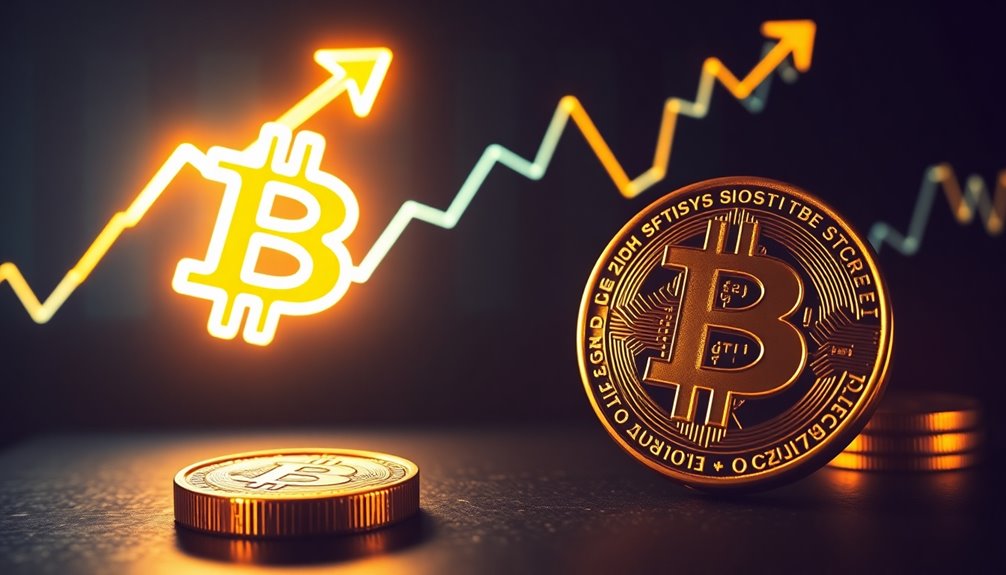Bitcoin's recent jump to $101,712 signals a robust recovery, but there's more at play here. You're likely aware of the critical resistance level at $106,000, which could set the stage for new highs. With institutional interest rising and positive regulatory vibes, it's essential to consider how these factors might influence future movements. What happens if Bitcoin breaks through that resistance? The implications could be significant.

Bitcoin has soared to an impressive $101,712, marking a remarkable recovery from its holiday lows of around $92,000. This surge isn't just a fluke; it reflects a growing optimism in the cryptocurrency market. You can feel the excitement as institutional investments ramp up and regulatory expectations shift favorably, creating a supportive atmosphere for Bitcoin's rise.
One of the key drivers behind this price recovery is significant institutional interest, exemplified by MicroStrategy's ongoing Bitcoin purchases. These moves signal that major players aren't just dabbling; they're serious about accumulating Bitcoin, which undoubtedly adds to the confidence of everyday investors like you. Additionally, MicroStrategy's involvement in the market demonstrates how institutional players continue to be committed to Bitcoin investments.
Moreover, with $908.1 million pouring into Bitcoin exchange-traded funds (ETFs) just last week, it's clear that the appetite for this asset class is strong.
On-chain data reveals another interesting trend: Bitcoin whales are making substantial acquisitions. Over 22,000 BTC, valued at over $2.24 billion, have been purchased recently. This accumulation acts as a bullish signal, indicating that those with deep pockets believe in Bitcoin's potential.
Coupled with increased network activity, including a rise in daily active addresses, the outlook for Bitcoin remains optimistic.
You've probably heard about the anticipation surrounding new political leadership and its potential impact on the regulatory environment. As expectations for crypto-friendly policies rise, investor sentiment gets a much-needed boost.
The possibility of favorable regulations could propel Bitcoin even higher, especially if recent political events continue to sway market sentiments positively.
However, it's essential to keep in mind that Bitcoin's journey isn't without its bumps. The volatility that characterizes the cryptocurrency market can shake investor confidence at a moment's notice.
Despite analysts predicting Bitcoin could hit $225,000 by the end of 2025, these projections come with risks. A breakout above $106,000 might set the stage for new all-time highs, but you should be prepared for sharp price fluctuations along the way.
Political influences, like the appointments of crypto-friendly officials, also play a role in shaping market dynamics. As you navigate the crypto space, staying informed about these external factors can help you make educated decisions.
The crypto market is evolving rapidly, and with Bitcoin's current trajectory, there's no telling what heights it might reach next.









